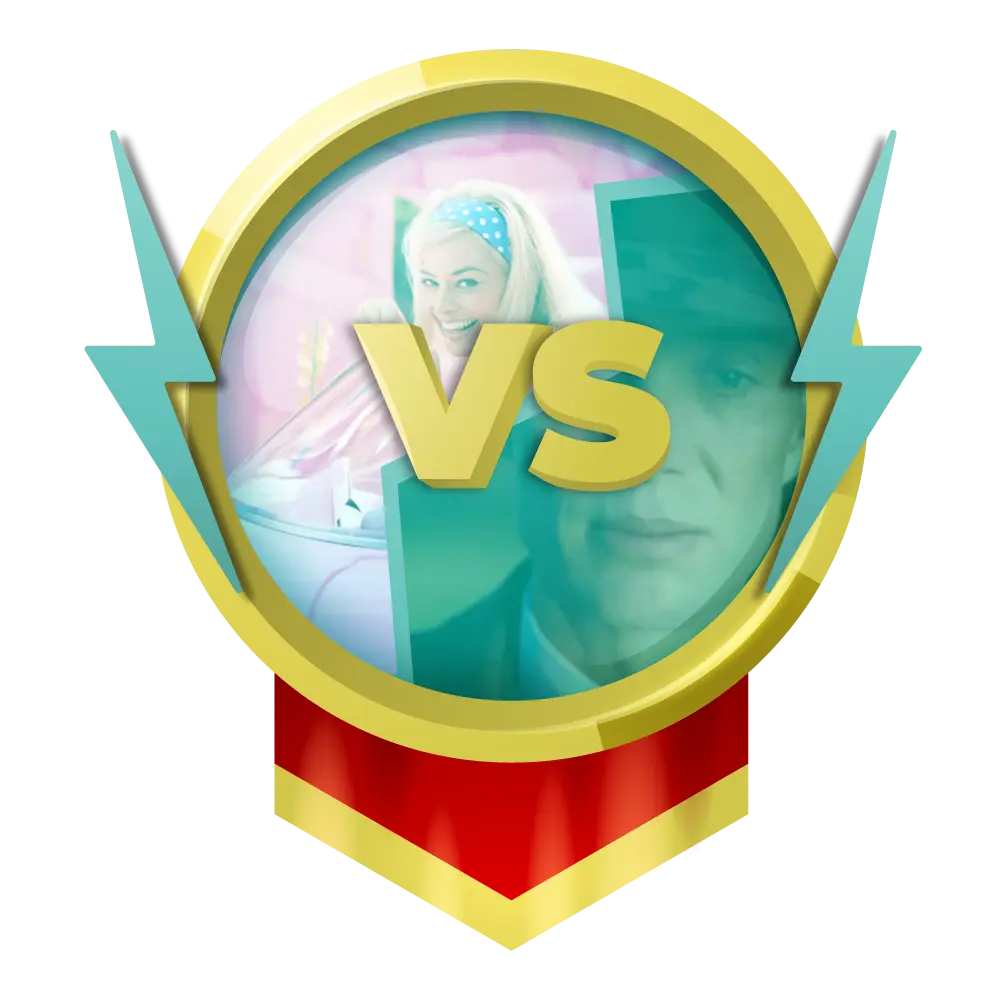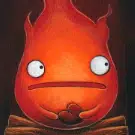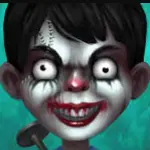Are you fascinated by classic horror films? Do you enjoy the mixed, ambiguous feeling of being able to retreat to the sober sense of reality, yet not completely getting away from the story? Such intertwined feeling is what makes the genre enjoyable, more than just excitement. In this article, I will introduce a common pattern found in classic horror films, with in-depth analysis of Frankenstein (1931), Halloween (1978) and Psycho (1960) as examples.
The Horror Arena
Leaving behind any strict rules or terms, let's consider the world inside a horror film as an arena, like a fighting arena or a horse racing game. Although you don't actually gamble in the cinema, you do make a guess about which character will survive in the end, right?
In Frankenstein, Henry is introduced as a mad scientist. Before creating the monster, he was perceived merely as a dreadful character for his craziness to dig up dead bodies and use them as materials for experiments. This might seem normal to today's audience, but in 1931, what Henry does was nothing less than a taboo. Although frightened, Henry's assistant is unable to stop him, and neither is Henry's teacher. When Henry finally brings the monster to life, the giant monster with a stitched body and a numb, innocent mind, roaring and questioning his own existence, becomes a even more horrible being than Henry. The balance of power starts shifting from Henry to the monster - sooner or later, the monstrous creature will get out of control. The battle between Henry and the monster begins, and there is no way turning back. Consequently, despite the monster’s curiosity to the new world, he’s ultimately a walking threat; regardless of Henry's intelligence and ambition to acquire the God’s ability, he cannot fix the monster. The monster cannot understand the complexity of humanity, as people cannot sympathize with his innocent motives. The two become mortal enemies before they get to be friends.

After an accident, Henry mistakenly put an abnormal brain into the monster’s head, which might result in the monster’s lack of proper morality. However, it wouldn’t be convincing to say that it is the brain that led to the following tragedy.
The horror arena of the monster is an alternative time and space where the product of science turned out to be tragedy. The madness of higher achievement of science leads to nothing more than misfortune. In this arena, it was eventually Henry who killed the monster, but when the story ended, the music rose, and credits rolled, we might wonder if something similar would happen in our real world. Will there be another Henry creating another version of the monster in some place we are not aware of? We can learn from everyday’s news that countless people are researching on creating new beings with consciousness, but will that make our lives any better, or these new creatures only come as destroyers? In a world where enternal peace among humans is a myth, where countless problems remain to be solved, the latter maybe more likely to happen. Henry’s desire to create is way beyond a careful discretion, after all, he wanted to be a God. Although what happened in Frankenstein is fictional, the character’s internal transformation is sympathetic. The sympathy then drives the audience to associate the fictional horror with their normal life, and wonder if the similar situation will happen to them.
And that wonder, along with the feeling of ambiguity, anxiety, and bizarre is called ‘Uncanny’. *

The monster unexpectedly threw the little girl into the river, though at the last minute they seem to reconcile.
In the final scene of the story, the monster is pinned to a wooden pole and set on fire as punishment for his sin of killing a little girl. It is strange that the monster, who is made of dead body parts, would be capable of feeling pain, but he does scream in agony. He is not human, and he doesn’t act like one. However, he feels like human and he reacts like one. Although his cruel act of killing cannot be forgiven, his original intention was not malicious--he threw the little girl into the river only because he thought she enjoyed playing in the water. It is clear that the monster possesses the capacity to love, but he did not know how to express it appropriately. The internal innocence of the monster is confirmed, but as the story progresses, what he does become increasingly far from innocent, or in other words, he has become more and more dangerous.

Though it was questionable that the monster would be afraid of fire, given that he became alive after a thunderstrike, this fear did make him more ‘vivid’.
Nevertheless, Frankenstein is less frightening compared to later horror films, as the order of the alternative world is restored in the end. The monster dies, life returns to normal, and thus the fear restulted from Frankenstein fades
Generating Fear in the Audience
In Halloween, it presents how horror is generated through the mundanities and makes a unique viewing experience. The ruthless murderer, Michael's psychopathic tendencies are depicted through massive P.O.V shots. It is interesting how the mundane daily life of the lead, Laurie, could become intriguing in Michael’s P.O.Vs. Is it because we fear our daily routine could be threatened under the potential surveillance of a stalker, or we always wonder if there is someone hiding in the shadow peeping our life? Perhaps more importantly, it's about the director’s intention to break the norms while leading us to a sense of guilty-pleasure mixed with fears.

Laurie lives a normal life before Michael’s intrusion. She walks to the school through the same path every day, and comes home before dinner.
When something changes, people feel more secure by grasping what’s going on. A significant feature of horror characters is their tendency to act illogically, leaving the audience puzzled. This can be seen in Michael's behavior towards Laurie, where he initially excludes her from his target lists due to her conservative nature, only to turn on her with no apparent reason. This sudden change adds to Michael's insane image, and along with the ominous background music, makes him even more unpredictably terrifying. Fortunately, the policeman Loomis arrives in time to save Laurie from Michael's attack. In a dramatic turn of events, Loomis shoots Michael and he falls from the balcony. However, Michael's body is nowhere to be found, leading us to believe that he may have escaped. As we watch empty shots of different locations accompanied by the same terrifying background music, we can't help but feel a sense of unease. The music lingers in our minds as we leave the cinema, and the empty road outside therefore seems to be ‘haunted’. Different from Frankenstein, Halloween does not resolve its tension at the end. By leaving us with more questions than answers, it forces us to confront our deepest fears and anxieties. By portraying Michael as an unpredictable and irrational character, the movie taps into this fear and keeps us on the edge of our seats until the very end.

Here comes the Boogeyman. The empty eyes greatly contributed to Michael’s horrifying image, leaving us no way to interpret his inner thoughts, while the sharp knife gripped in his hand only adds to the sense of danger.
More than Jump-scares
In Psycho, Alfred Hitchcock presents a classic shocking scene of the main character being murdered in the shower. The scene is edited with rapid cuts, close-ups and shrieking music which perform a perfect symphony to the atmosphere. However, the most scary part of the scene is instead the uncanny death of the victim. Normally, the bathroom is a place where we feel relax and safe, but by revealing a vulnerable and naked victim having nowhere to escape from the murderer, Hitchcock reversed people’s conventional impression of the bathroom.

The shower scene in Psycho
On the other hand, low angle shots is commonly applied throughout the movie. These shots, which show the characters from a low angle perspective, can gradually make the audience feel uncomfortable as it is not how we normally see things. One particular scene that stands out is when Norman's "mother" races out from her room to kill Detective Arbogast. This scene is shocking not only because of it's a jump-scare, but also the sudden change in camera angle from a low angle to a high angle shot. The rapid, jarring switch added an extra layer of shock to an already terrifying scene.

One of the low angle shot in Psycho.

Another example of low angle shot with low key light. Behind Norman, there are his collections of specimen. In this scene, he talked to Marion in a relaxed tone, while everything else were creepy—things are not as they seem.
This use of low angle shots is a deliberate technique employed by Hitchcock to create a sense of tension and disorientation. By filming the characters from a low angle, he makes the audience feel as if they were the victims as well. Furthermore, the low angle shots can also be seen as a reflection of the distorted reality that the characters are experiencing. As the plot progresses, the audience is taken on a journey to exploreNorman Bates’s split personality disorder. The use of low angle shots is one device that used to heighten Norman’s twisted psyche.

The sudden change of camera angle, and this is the only high angle shot in the film.
Prior to the murderer’s true identity being unmasked, there are clues indicating Norman, the host of the motel, might be the one. However, no one would have been certain that there was a psychopathic murderer hiding inside Norman, as he has been portrayed as a friendly and harmless farm-boy with a heart-warming smile and homely look. (Anthony Perkins’s image makes Norman bothy sympathetic and creepy.) Later, as we learn about Norman’s hobby of taxidermy, and see Norman's grin and a transparent skeleton grin hidden within in the final scene, it is difficult not to wonder if there are other people out there who also have a macabre nature hidden behind their amiable mask. This sudden doubt can leave the audience with a sense of unease and uncertainty, as we realize that people are not always what they seem. It is a reminder that there may be more to a person than meets the eye, and that we should always be cautious when dealing with strangers.

The devil hidden under angel’s smile.

Norman’s split personality disorder. One of his hand is attempting to kill, and the other hand is stopping him from doing.
The Uncanny Qualities
As indicated, the characters in classic horror films like Frankenstein, Halloween, and Psycho all possess the 'Uncanny' qualities that make them both frightening and fascinating. By showing a story that is familiar but also foreign to our routines, the directers expand the horror arena to where the audience can leave but not escape the experience of ‘uncanny’. In other words, they offer us a unique opportunity to confront our deepest fears and anxieties. These films transport us to a place where the line between reality and fantasy is blurred, while we are forced to confront the darker aspects of our own humanity. The interesting thing is that it is the character on screen who are playing our avatar, which then made everything exciting.
*The term was coined by Sigmund Freud in his 1919 essay "The Uncanny" (Das Unheimliche) He argued that the uncanny is in reality nothing new or alien, but something which is familiar and old-established in the mind and which has become alienated from it only by repression.















































Share your thoughts!
Be the first to start the conversation.